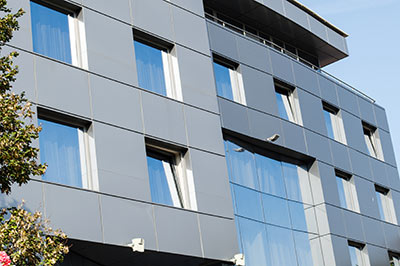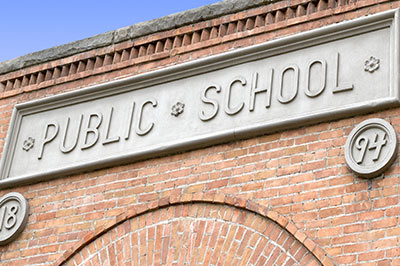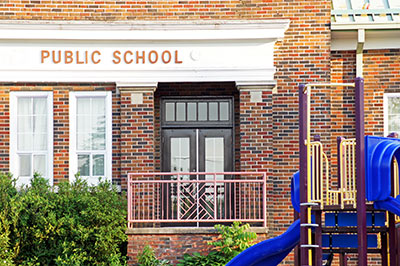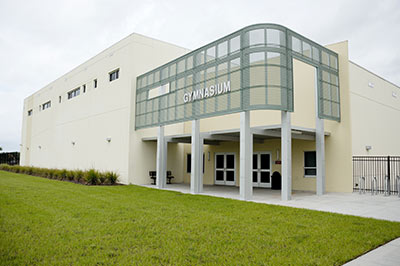By G. Victor Hellman.
Educators are increasingly aware of the importance of properly designed and maintained facilities for effective learning and instruction. There is much discussion on approaches to learning in the 21st century and what a 21st century school looks like. In addition, there is a growing body of knowledge citing the merits of Community Learning Centers (CLC) or community schools (Malone & Jacobson, 2014). The benefits of Community Learning Centers (CLC) are well known. In an EFC blog post this past September, Malone and Jacobson outlined the advantages of CLCs. Community Learning Centers provide a student with many social supports that they otherwise would not have access to. It is my contention that a community school must include attributes that extend beyond the facility or school walls.
On June 2, 2015, the Education Facilities Clearinghouse (EFC) in cooperation with the Institute for Educational Leadership (IEL) and the Coalition for Community Schools (CCS) sponsored a Community Learning Center study trip to Cincinnati, Ohio. In addition to staff from the three organizations, representatives from organizations such as the American Association of School Administrators (AASA), National School Boards Association (NSBA), 21st Century School Fund (21CSF), Council of Great City Schools (CGSC), architects and state level facilities directors participated. While in Cincinnati, we had the opportunity to visit three different public school sites: Pleasant Ridge Montessori Community Learning Center, Oyler Community Learning Center, and Roberts Academy Community Learning Center. The testimonials we heard on this study trip validated the merits of what CLCs can offer.
While on our study trip, we examined the factors that influenced the success of the CLCs. We can identify the key steps that Cincinnati took as they implemented their 12-year, $1 billion capital campaign (IEL, 2014). The process involved over one year of public engagement, one year of design, and one and a half to two years of construction for each facility. These steps were repeated for the construction of 34 new buildings and 16 total renovations. The final result was 5,351,668 ft2 of new school facilities designed to meet the individual needs of each community (IEL). This was a mammoth undertaking! The amount of man-hours required for just the public engagement part of the process is beyond comprehension.
What did we observe on this study trip that would provide insight into how to plan, design, and implement community schools successfully? Some of the more relevant components of the process I observed were not academic or per-square-foot cost calculations. What I observed was not designing a perfect floor plan and replicating it across the division. To the contrary, I observed a key individual at the center of the action, spearheading the program—a woman who was a driving force and would not take ‘No’ for an answer or settle for second best. This individual was quietly humble yet had the political capital to muster the appropriate resources and bring them together for the good of students. Yes, the facilities were beautiful and built to facilitate each community school’s individually determined mission; however, in addition to having nice, modern facilities, the three schools on the tour were led by caring, student-centered individuals. Parents were actively involved in the education of their children, and students were having fun and were engaged in the learning process.
The skeptical educator might think all this positive talk is a fantasy, but it is reality in the schools we toured in Cincinnati. It was a reality that begat success not only for the students, but also for the entire neighborhood. I pondered what created this success. How is it that Cincinnati achieved a sense of community across its schools that is rarely seen in other divisions? I asked the champion at the center of the project, “To what do you attribute the success?” Her answer was rather simple, yet it presented the challenge that school administrators across the country face daily: Trust.
During the public engagement planning sessions of the building campaign, Cincinnati community members were asked what was important to them in their neighborhood schools. Initially, many citizens were reluctant to provide input and did not have faith that the process would respond and deliver on their articulated desires. The public engagement process honored the wishes and desires of the constituents and thereby earned their trust. Once citizens realized their input was valued and incorporated into the final product, a sense of ownership was established among all participants. A sense of ownership built upon trust is at the center of a successful community school, or any school for that matter. Whether a division decides to implement the community school model or not, school administrators need to be reminded how important it is to have the trust of the families they serve.
Printable Blog
References
Malone, H. & Jacobson, R. (2014, September 8). Bricks and mortar: community schools as an essential facilities strategy. Retrieved from http://www.efc.gwu.edu//resources/library/bricks-and-mortar-community-schools-as-an-essential-facilities-strategy/
Institute for Educational Leadership (IEL). (Producer). (2014). Community school facilities: authentic engagement, shared space, and neighborhood hubs [Video Webinar]. Retrieved from http://iel.org/communityschools/webinars/archives/2014-09-15/
Victor serves as the Research Project Director for the Education Facilities Clearinghouse (EFC). Dr. Hellman has more than 31 years of work experience in public schools in Virginia. Prior to joining the EFC, Dr. Hellman served as Deputy Superintendent of Operations and Support for a mid-urban school district. In that role, he was responsible for finance, facilities, transportation, student services, and food services.











